The Black Sheep Pub
247 S. 17th Street
Philadelphia, PA 19103
6:00pm
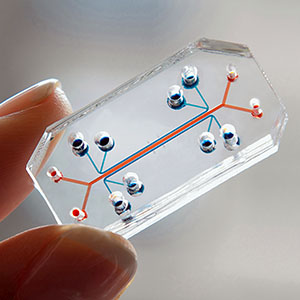 Dongeun (Dan) Huh
Dongeun (Dan) HuhWilf Family Term Assistant Professor, Bioengineering (BE), University of Pennsylvania
“Mimicking Human Organs on a Chip”
Remarkable progress in life science and technology in the past century has advanced our fundamental understanding of the human body beyond our imagination. The ever-increasing knowledge of human anatomy and biology, however, has done surprisingly little to improve the way we emulate and probe the complex inner workings of the human body. Even today, our ability to model human physiological systems relies on the century-old practice of cell culture or animal experimentation that has raised significant scientific, economic, and ethical concerns. The paucity of predictive and human-relevant model systems is emerging as a critical impediment to our scientific endeavors for a wide variety of biomedical applications. This talk will present interdisciplinary research efforts in my laboratory to develop microengineered in vitro models that can emulate the structural and functional complexity of human organs. Specifically, I will talk about i) bioinspired microsystems that mimic the alveoli and airways of the human lung during health and disease, ii) microengineering of vascularized and perfusable 3D human tissues, iii) a blinking eye-on-a-chip microdevice that emulates the ocular surface of the human eye, and iv) microengineered physiological models of human reproductive organs.
Stoney’s British Pub
3007 Concord Pike
Wilmington DE
7:30pm
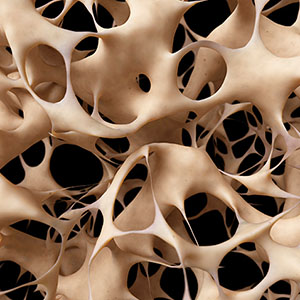 Struan F. Grant
Struan F. GrantProfessor of Pediatrics, Perelman School of Medicine, University of Pennsylvania
“3D Genomics and Osteoporosis”
Expensive whole genome searches have revealed multiple genetic signals robustly associated with many diseases, but does not mean that the precise localization of the actual underlying causal genes has been achieved. Dr. Grant has worked on a ‘3D Genomics’ approach to physically connect these signals to the correct effector genes. He will use osteoporosis as an example, but the method has applications for most common diseases that blight society.
The Black Sheep Pub
247 S. 17th Street
Philadelphia, PA 19103
6:00pm
 Dillon Brout
Dillon BroutPhD Candidate and NASA Einstein Fellow, University of Pennsylvania
“Shedding Light on Dark Energy and the Current Crisis in Cosmology”
Cosmologists, scientists who study the origin and evolution of our universe, are completely in the dark. 95% of all energy/matter in the universe remains mysterious, that being Dark Energy and Dark Matter. If this alone was not enough cause for concern, furthermore, measurements of our baby universe shortly after it was born (14 billion years ago) do not agree with measurements of the universe today. So cosmologists are in a crisis, and we are considering a complete rethinking of gravity, Einstein’s 4D space-time continuum, particle physics, or the Big Bang itself, to explain our perplexing measurements. It is entirely possible that a revolution in our understanding of the cosmos is around the corner, for which a Nobel prize will most certainly be awarded. I will discuss how state of the art projects that I’ve led at UPenn using supernovae and colliding neutron stars discovered with a telescope called the Dark Energy Camera have contributed to this heated discussion.
Stoney’s British Pub
3007 Concord Pike
Wilmington DE
7:30pm
 Bob Freed, Fellow ASM & Bert Moniz, PGM
Bob Freed, Fellow ASM & Bert Moniz, PGMDuPont
“DuPont’s Metallurgical Innovations”
For over 200 years, DuPont, headquartered in Wilmington Delaware, has been famous for a host of polymers and chemicals that the company invented, made and successfully marketed, transforming the region into an enriching place to work. Less known are the metallurgical developments that enabled safe and commercially successful operation of the manufacturing plants. Novel DuPont science and technology and know-how enabled other metallurgical inventions. Many of these benefitted not only DuPont, but also other industries. This colorful talk describe the technical background to some key inventions and the people who were responsible.
The Black Sheep Pub
247 S. 17th Street
Philadelphia, PA 19103
6:00pm
 Paulo E. Arratia
Paulo E. ArratiaMechanical Engineering & Applied Mechanics, University of Pennsylvania
“Fluid Mechanics of Reproduction”
Successful conception requires that a mature sperm arrive at the site of fertilization. This journey is quite complex and necessitates coordinated activity of motile sperm cells, muscular contractions of the uterus and oviduct, as well as ciliary beating. In this talk, I will focus on an important but not often discussed part of the fertilization process, namely how sperm cells swim and interact with its environment as they progress from the insemination site through the cervix into the uterus. Recent developments in the field suggest that one can tune the environment to improve sperm motility and possibly fertilization rates.
Stoney’s British Pub
3007 Concord Pike
Wilmington DE
7:30pm
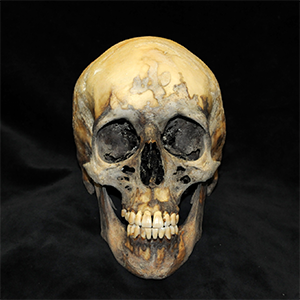 Dr. Samantha Cox
Dr. Samantha CoxUniversity of Pennsylvania Museum
“Forensic Anthropology: Exhumation & Identification of America’s First Serial Killer”
The subject of, and inspiration for, numerous books, movies, and TV shows, the infamous H.H. Holmes is widely regarded as America’s first serial killer. Hanged for murder in Philadelphia, in 1896, and recently most recognizable as “The Devil” in Erik Larson’s best-selling book The Devil in the White City, mystery has shrouded H.H. Holme’s life and death since he first became a national phenomenon in the late 19th century. Buried in a block of concrete, Holmes has long been rumored to have secretly conspired to escape execution, and in 2017 the grave was excavated and the remains exhumed for forensic investigation. Using modern archaeological, anthropological, forensic, and DNA techniques, we analyzed every aspect of Holmes in an attempt to definitively identify the body found in his grave. Come out to learn about forensic archaeology and how history and technology helped us to unravel Holmes’ last conspiracy.
The Black Sheep Pub
247 S. 17th Street
Philadelphia, PA 19103
6:00pm
 Gene Mele
Gene MelePhysics & Astronomy, University of Pennsylvania
“Topological Insulators: Mind the Gap”
What is a topological insulator? What is its relation to the iconic warning posted on the London tube? And how about Brexit? Get behind a pint for a wide ranging discussion of these questions and other reflections on the harmonies of topological states of matter.
Stoney’s British Pub
3007 Concord Pike
Wilmington DE
7:30pm
 Paulo E. Arratia
Paulo E. ArratiaMechanical Engineering & Applied Mechanics, University of Pennsylvania
“Fluid Mechanics of Reproduction”
Successful conception requires that a mature sperm arrive at the site of fertilization. This journey is quite complex and necessitates coordinated activity of motile sperm cells, muscular contractions of the uterus and oviduct, as well as ciliary beating. In this talk, I will focus on an important but not often discussed part of the fertilization process, namely how sperm cells swim and interact with its environment as they progress from the insemination site through the cervix into the uterus. Recent developments in the field suggest that one can tune the environment to improve sperm motility and possibly fertilization rates.
The Black Sheep Pub
247 S. 17th Street
Philadelphia, PA 19103
6:00pm
 Dr. Samantha Cox
Dr. Samantha CoxUniversity of Pennsylvania Museum
“Forensic Anthropology: Exhumation & Identification of America’s First Serial Killer”
The subject of, and inspiration for, numerous books, movies, and TV shows, the infamous H.H. Holmes is widely regarded as America’s first serial killer. Hanged for murder in Philadelphia, in 1896, and recently most recognizable as “The Devil” in Erik Larson’s best-selling book The Devil in the White City, mystery has shrouded H.H. Holme’s life and death since he first became a national phenomenon in the late 19th century. Buried in a block of concrete, Holmes has long been rumored to have secretly conspired to escape execution, and in 2017 the grave was excavated and the remains exhumed for forensic investigation. Using modern archaeological, anthropological, forensic, and DNA techniques, we analyzed every aspect of Holmes in an attempt to definitively identify the body found in his grave. Come out to learn about forensic archaeology and how history and technology helped us to unravel Holmes’ last conspiracy.
The Black Sheep Pub
247 S. 17th Street
Philadelphia, PA 19103
6:00pm
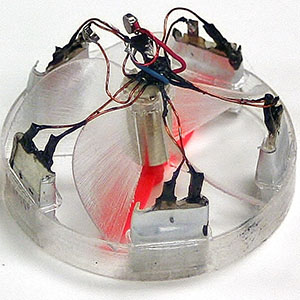 Mark Yim
Mark YimMechanical Engineering & Applied Mechanics, University of Pennsylvania
“Innovation in Drones: The World's Smallest Drone.”
In 2017, Piccoli and Yim received the world record for the smallest self-powered drone at 39mm. How does it work and how did we get there? Over about 10 years and many dozens of prototypes we learned about what doesn’t work. We will talk about simplifying mechanisms, rotational dynamics, passive stability, and the physics of engineering small flying devices to be controllable. Along the way we will talk about under-actuated helicopters and show videos of a variety of other flying and transforming robots.
Stoney’s British Pub
3007 Concord Pike
Wilmington, DE
7:30pm
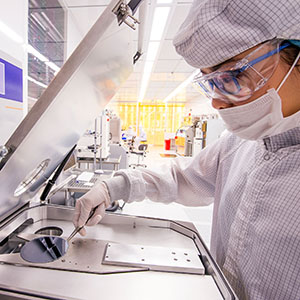 Dr. Noah Clay
Dr. Noah ClayDirector, Quattrone Nanofabrication Facility, PENN
“Nanotechnology in Nature, Ancient Times, Today and Beyond”
Nanotechnology is a relatively new field encompassing human made objects that are so small that they can not be seen with the naked eye. In the past few decades, advances in nanotechnology have enabled seamless use of electronics in our everyday lives and is the focus of a great deal of research in basic science, engineering and medicine. However, nanomaterials had been used unknowingly by humans for millennia to construct porcelain coatings, paints, dyes, swords, stained glass and sculpture. These early uses of nanotechnology were undoubtedly inspired by nature: bright colors in flowers, spider’s silk, gecko’s feet, shells, butterfly wings and lotus flowers. In this talk, I will connect the objects we see in nature with ancient uses, today’s nano-devices and provide thoughts on where this incredible field will further impact our lives in the next decades.
The Black Sheep Pub
247 S. 17th Street
Philadelphia, PA 19103
6:00pm
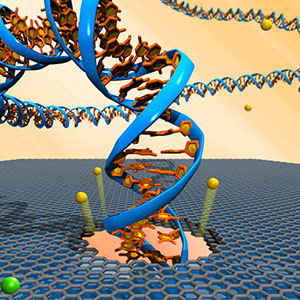 Marija Drndić
Marija DrndićFay R. & Eugene L. Langberg Professor of Physics, University of Pennsylvania
“The Hole Story: Ions and Molecules in Very Small Holes”
In this talk, I will tell you about how we can make and investigate tiny (few-atoms large) holes to detect, analyze and filter small molecules. Beyond basic science, this is relevant for many practical areas including personalized medicine (DNA and protein sequencing, detection of biomarkers in blood), and also other fields including filtering and desalinating water, and even efficient energy applications.
Stoney’s British Pub
3007 Concord Pike
Wilmington DE
7:30pm
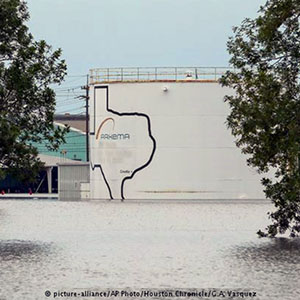 Dr. Charles Potter
Dr. Charles PotterTA Instruments, New Castle, DE
“Industrial Emergency Preparedness: Hurricane Harvey - A Case Study”
In August 2017, Hurricane Harvey made landfall in the Texas gulf coast, causing over $100 billion in damage. Residents and the local industries were paralyzed. The Houston metropolitan area and the shipping channel with its major petrochemical and manufacturing complexes came to a standstill. More than 100 toxic releases occurred during the storm with over 500 million gallons of toxic industrial waste coming from just one plant. One spectacular event occurred when the inventory caught fire at a plant after it lost electricity. Was the plant adequately prepared? Let’s stop and think, is our community adequately prepared?
The Black Sheep Pub
247 S. 17th Street
Philadelphia, PA 19103
6:00pm
 Dr. Noah Clay
Dr. Noah ClayDirector, Quattrone Nanofabrication Facility, PENN
“Nanotechnology in Nature, Ancient Times, Today and Beyond”
Nanotechnology is a relatively new field encompassing human made objects that are so small that they can not be seen with the naked eye. In the past few decades, advances in nanotechnology have enabled seamless use of electronics in our everyday lives and is the focus of a great deal of research in basic science, engineering and medicine. However, nanomaterials had been used unknowingly by humans for millennia to construct porcelain coatings, paints, dyes, swords, stained glass and sculpture. These early uses of nanotechnology were undoubtedly inspired by nature: bright colors in flowers, spider’s silk, gecko’s feet, shells, butterfly wings and lotus flowers. In this talk, I will connect the objects we see in nature with ancient uses, today’s nano-devices and provide thoughts on where this incredible field will further impact our lives in the next decades.
Stoney’s British Pub
3007 Concord Pike
Wilmington, DE
7:30pm
 Arjun G. Yodh
Arjun G. YodhPhysics & Astronomy, University of Pennsylvania
“Coffee Rings”
In this talk, I will discuss the science needed to understand a drying drop of coffee. We will see that even this very simple effect depends on many factors, ranging from water evaporation and fluid convection within the drop, to tension at the air-water surface and pinning of the liquid-solid contact line onto the counter-top. This rich phenomenology is also important for practical applications related to coatings, printing, painting, and even genotyping. I will describe a series simple drying experiments, on increasingly more complex fluids, that reveal the zoology of physics ideas underlying this everyday occurrence.
